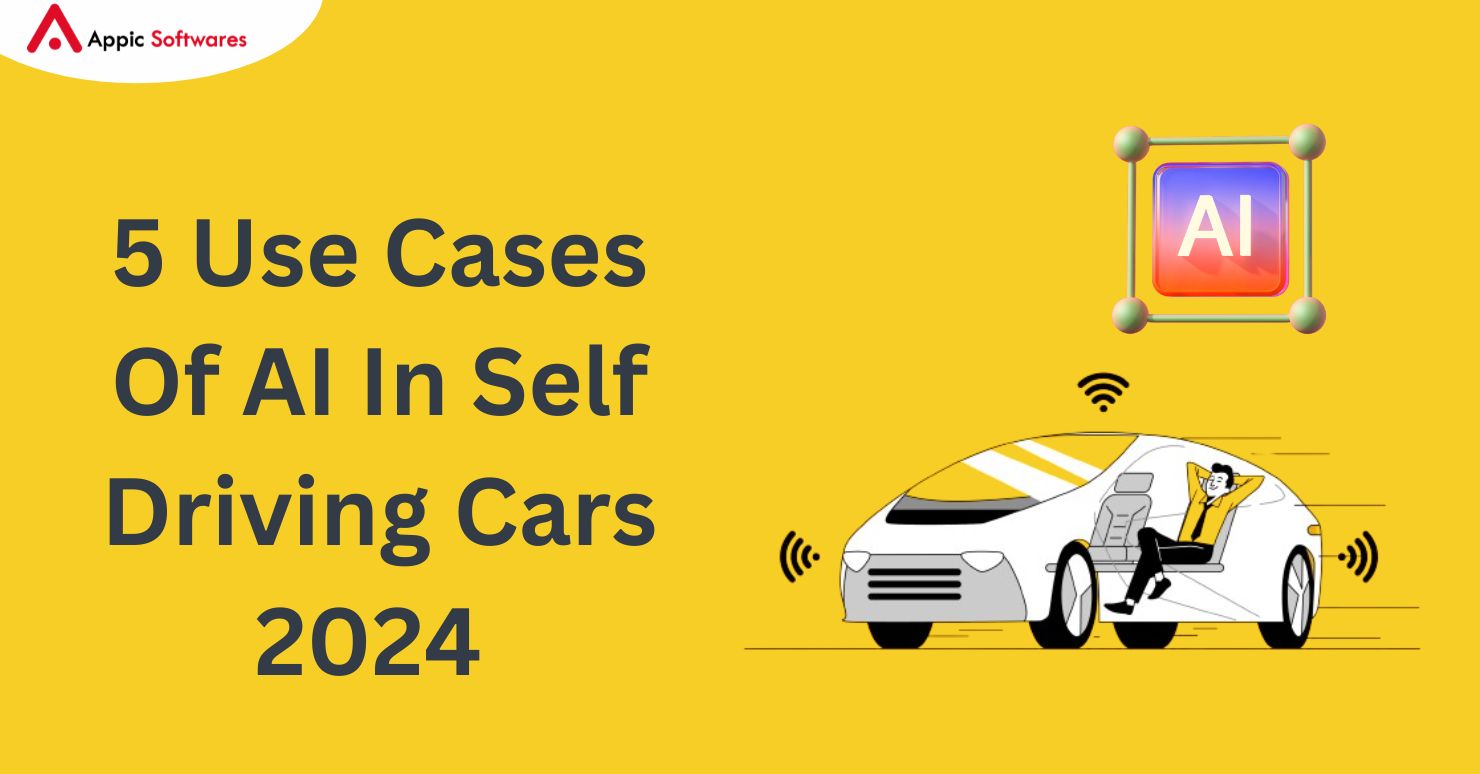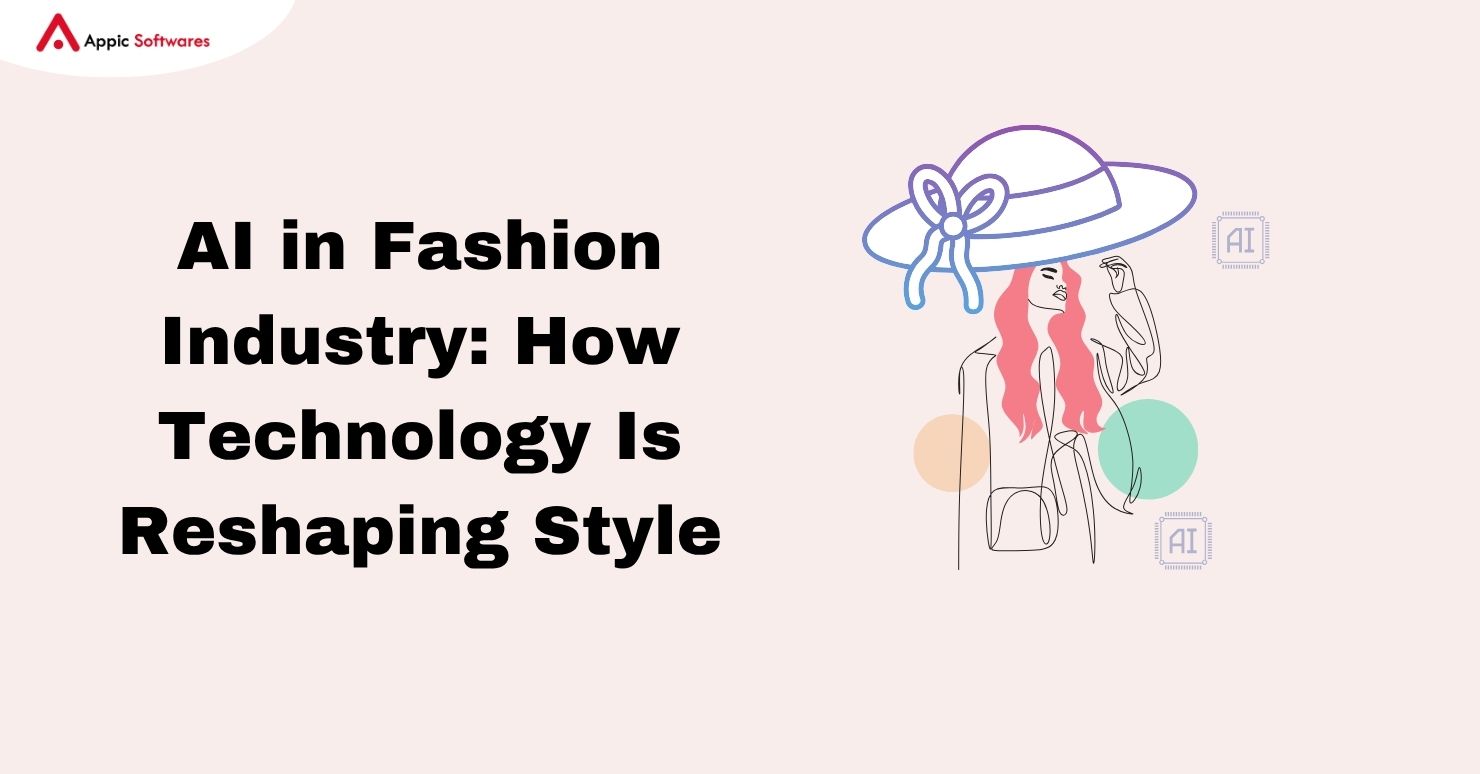
These days, AI technology has completely changed the way people travel. Now, self-driving cars with smart technology can find their way around and make decisions on the road in real-time. Artificial intelligence (AI) in self-driving cars promises safer and more efficient ways to get around, which could eventually lead to fewer deaths caused by human error.
A study by the National Highway Traffic Safety Administration (NHTSA) and Google found that about 93% of car crashes are caused by mistakes made by people. Among these mistakes are those caused by poor vision or hearing, as well as the effects of driving while drunk. AI in self-driving cars uses sensors and software to figure out what’s going on around them. This means being aware of the obstacles and traffic lights and making quick choices to make sure the ride is safe and enjoyable. They are better able to handle complicated roads because they can learn and change.
The progress in self-driving cars has made transportation safer and better for the environment. Around a quarter of the global market will likely be made up of self-driving cars by 2035–2040. This could be because AI technology is getting better. Statista also says that by 2030, the world market for artificial intelligence in cars will be worth $74.5 billion. AI will make transportation systems safer, more environmentally friendly, and easier to use in the future, as shown in this graph.
Global market for artificial intelligence in cars from 2019 to 2030
Artificial intelligence (AI) helps many fields by automating hard chores and making them more efficient, which saves time. But in this blog, we’ll talk about how AI in self-driving cars is changing the way people get around today.
How AI plays a part in self-driving cars
AI is being used in self-driving cars and smart traffic systems, which has completely changed the auto business. Using machine learning algorithms, vehicles can change to changing road conditions and traffic situations. This makes driving safer, easier, and more productive. AI has also been very important in the development of electric and hybrid cars, helping makers make designs that use the least amount of energy and run as efficiently as possible. Using AI technology in self-driving cars is important for many important reasons, such as
- Predictive Modeling: AI lets self-driving cars guess how people on foot and other cars will act. The car has predictive models and analytics built in so that problems like these can be predicted and stopped before they happen.
- Sensing and Perception: Lidar, cameras, ultrasonic sensors, and radar are just some of the sensors that self-driving cars use to get specific information about their surroundings. AI algorithms look at this information to make detailed maps of the surroundings and make smart choices.
- Language Processing: Some self-driving cars use Natural Language Processing (NLP) to talk to people by recognizing their voices. This rests on AI being able to understand and respond to spoken commands to maps and find things like people, cars, traffic lights, and road signs.
When AI is used with real-time monitoring data, it is possible to make decisions on the spot. For instance, when a self-driving car sees a person crossing the street, AI helps it figure out the best thing to do, such as whether to slow down or stop.
However, as self-driving cars get better at understanding, adapting to, and navigating complex real-world situations, it shows how AI has the potential to completely change the automotive business. Now let’s look at how AI systems are used in cars that drive themselves.
Artificial intelligence algorithms that are used in cars that drive themselves
The development of self-driving cars needs to use both supervised and unsupervised algorithms for vehicle AI.
Top AI systems are used in cars that drive themselves.
Learning with Supervision
A very important idea in machine learning is called “supervised learning.” These teach a model how to correctly map inputs to outputs by giving it labeled information to work with. Supervised learning is very important for self-driving cars to do things like recognizing objects, building models, and predicting how they will behave. There are the following ways to do guided learning:
Identifying Things
With the help of supervised learning methods, self-driving car systems get a lot of practice so they can correctly pick out important parts of sensory data. This includes being able to recognize people, cars, traffic lights, and road signs so that you can make smart choices.
Our company, Appic Softwares, created ActiDrive, an easy-to-use gesture-recognition app that uses visual technology to make driving more enjoyable.
The gesture-recognition app ActiDrive
The application not only makes the driver safer while driving, but it also keeps detailed records of all the user’s trips, including the routes they choose, the time they spend on them, and the lengths they travel.
Scaling up
With supervised learning techniques, it’s possible to make complicated models that can guess how likely it is that certain things will happen in the traffic world. Advanced data analysis and pattern recognition models can correctly guess important events, like how likely it is that a pedestrian will cross at a certain spot or that another vehicle will suddenly change lanes.
Trying to Guess the Behavior
In the case of self-driving cars, behavior modeling is another important use of supervised learning. With the help of full training data and advanced learning algorithms, these systems can guess and even predict how other people will behave on the road. The self-driving car can handle problems and unexpected situations better and more easily when it takes this proactive method.
Learning Without Supervision
In contrast to supervised learning, unsupervised learning is based on a framework that makes it easier to find patterns and connections in datasets that have not been labeled. This way of learning is used in many ways by self-driving cars, such as to find anomalies, group data, and pull out features.
Finding An Oddity
Unsupervised learning methods let self-driving cars notice and react to strange and unexpected things that happen around them. These kinds of systems are very useful because they can handle and analyze large amounts of data very quickly and accurately. They can quickly notice and react to things that don’t happen as planned, like people crossing the street without warning or cars making fast route changes.
A grouping
This lets methods for unsupervised learning figure out which data points are similar and group them in a way that makes sense in the context of vehicles. By grouping and labeling data points that are related in some way, these systems can tell the difference between different driving conditions and situations. Insight into complicated driving situations is improved by this, which helps the self-driving car make better decisions and respond faster.
Getting Features
Unsupervised learning methods are very important for getting the most important information out of the sensory data that self-driving cars collect. These systems can look at a lot of different data points to find out important things about the driving system. This gives them a full picture of the area around them. This is very important for finding and studying important object edges in the lidar point clouds and pulling out key image features to help the self-driving car see and understand things better overall.
Now that you know how AI systems work for self-driving cars, let’s talk about the best ways AI is used in self-driving cars.
How AI Can Be Used in Self-Driving Cars
There are many ways that AI is used in self-driving cars, which clearly shows how AI can change the automotive industry and improve safety and operational efficiency. These cutting-edge ways that AI is being used in self-driving cars are
Top ways AI is used in self-driving cars
Putting together sensor data
A group of monitors send real-time information to the vehicle’s main computer. This data tells the vehicle about the road, the traffic, and any possible problems. Smart algorithms, such as artificial neural networks (ANN), read these data streams and use them to find and identify objects in front of and around the car. It has hardware and software modules that are just for sensors and can handle things in parallel, which helps it make quick decisions.
Optimization of Trajectories
Planning a path is important for guiding a car and keeping traffic under control. There are several parts to this dynamic job that can be done by smart artificial algorithms. AI bots choose the safest, quickest, and least expensive ways to get from A to B based on how they have driven before.
Getting around on bad roads
The car plans its route and uses AI-based algorithms to deal with things like objects, people walking, bikes, and traffic lights. Object detection algorithms allow machines to act like people, but they have trouble when working with different road and weather circumstances.
Keeping up with maintenance
Predictive maintenance is a hopeful method that uses machine monitoring and predictive modeling to figure out when something like this will happen. AI systems can use both supervised and unsupervised learning to look through data from both onboard and offboard to predict and avoid problems in the future. This saves a huge amount of time and money.
Looking at insurance data
The vehicle data log contains important details about how the driver behaved that could be useful in investigating accidents and filing insurance claims. As people become more interested in self-driving cars, liability becomes a big problem, and car companies are taking on more responsibility. Just like with black box data in aviation, it will be important to keep relevant snapshots of sensor data after an accident so that they can be analyzed later. This will be important for accident inquiries and insurance claims.
Our top-rated automotive software creation services can help you explore the future of mobility by adding AI to your custom automotive apps.
AI being used in custom automotive uses
Why AI is useful for self-driving cars
Putting AI into self-driving cars has opened up a new era of better safety, less hassle, and many other benefits. Some of the best things about AI in self-driving cars are:
Benefits for the environment
Greenhouse gas emissions are cut down in self-driving cars with electric or hybrid engines. This is a huge step toward protecting the earth. AI also helps make things more eco-friendly by recommending the best ways to drive, accelerating in ways that use less energy, and less fuel overall. This makes cars less harmful to the environment.
Better accessibility
People who are disabled or have trouble moving around can use cars with built-in AI that can park themselves, help them with wheelchairs, and listen to their voice orders. This is shown by Tesla’s “summon” feature, which lets the car get into tight areas and come to the passenger when they call it. This gives people who can’t drive themselves more freedom and ease.
Better safety
Adaptive cruise control (ACC), lane departure warning (LDW), and automatic emergency braking (AEB) with AI have made a big difference in how safe travelers are. For self-driving cars, this kind of safety feature is one of the best things about AI. Its sensors and cameras can find obstacles and dangers and take the right steps to avoid accidents.
Better efficiency
When AI is used to make self-driving cars, it finds cheaper routes that use less energy and take less time to drive. AI keeps an eye on traffic data and road conditions in real-time to better guide vehicles. It also controls how fast and how slowly vehicles accelerate and brake to use less energy and last longer.
Getting rid of traffic
Self-driving cars also have AI, which lets them talk to each other and share real-time traffic information. This lets them choose routes that aren’t crowded. This feature cuts down on traffic jams and makes sure that traffic is spread out fairly on all roads, which makes our roads safer and more useful.
Examples of artificial intelligence used in self-driving cars
Here are some examples of how major automakers are using AI to make self-driving cars that will change the way people drive and how roads are used.
Examples of AI in self-driving cars in the real world
Tesla
Many people know Tesla for its high-tech ideas, like ADAS and self-driving cars. Advanced AI systems give the Tesla car great decision-making abilities and precise control, which is a step forward in the development of smart cars. Read this blog post to learn more about how much it costs to build the Tesla EV Supercharger system.
Waymo
As a leader in self-driving technology, Waymo has released an AI-based self-driving system that can plan complicated routes and respond intelligently to its surroundings. Waymo has become a leader in self-driving cars by using AI in its processes.
NVIDIA
NVIDIA has made a full set of AI computing platforms and technologies for the auto industry. These help to integrate AI into the creation and management of cars. The company’s Drive platform shows how well AI features like perception, maps, and strategic route planning can work together. This makes self-driving cars smarter and better at finding their way.
Uber
Uber has put a lot of money into research and development for self-driving cars so that it can be a leader in this field. Their main focus is on self-driving cars that are run by AI. They want to offer a safe and effective ride-sharing service. Their focus on new technologies shows that they want to provide a cutting-edge transportation experience.
BMW
BMW is very committed to using AI in many areas of car technology, such as driving assistance systems and entertainment systems inside the cars. BMW’s Intelligent Personal Assistant, which uses advanced natural language processing, shows that the company is dedicated to making travel more personalized and easy.
Where AI is Going in Self-Driving Cars
The vehicle AI market is expected to grow at a compound annual growth rate (CAGR) of 55% by 2032, making the future look bright. A lot of new things will happen because of improvements in AI algorithms, predictive maintenance solutions, sensor technologies, and computer power. This is the start of a new era of growth and innovation.
Shortly, AI will have a big effect on the auto business. We can look forward to more self-driving cars, better safety features, and more personalized feature choices. Adding AI will have many benefits, such as making it easier to move around, cutting costs, making operations more efficient, putting in place smart transportation systems, and completely changing the way we travel now.
Appic Softwares can help you make a name for yourself in the auto industry.
AI for self-driving cars has changed the auto business and paved the way for a future of transportation that will be very different. Improvements in self-driving cars and AI programs are causing a big change in how safe, efficient, and enjoyable cars are to use. AI has a huge amount of promise for self-driving cars, which means that they will keep getting better and come up with new ideas that will change the world.
Partner with Appic Softwares if you want to see how AI can change your business for the better. Our cutting-edge AI creation services are what make technology better and lead to new ideas. Get in touch with our AI experts right away to learn more about our services and solutions.
FAQs
- If a car drives itself, how does AI work?
Self-driving cars use real-time input from lidar, radar, and cameras to help the AI understand their surroundings. This information is used by algorithms to find their way, dodge obstacles, and follow traffic laws.
- How does AI work in cars that drive themselves?
Self-driving cars use AI to sense, make decisions, use predictive modeling, and handle natural language. This lets them see obstacles, guess how people will act, plan routes, and talk to riders, all of which make driving safer.
- Where does AI go from here in self-driving cars?
AI is improving, which means that self-driving cars can do more on their own and be safer, more reliable, and more efficient. These improvements could lead to the next big thing, which would make self-driving cars the future of transportation.
So, what are you waiting for?








